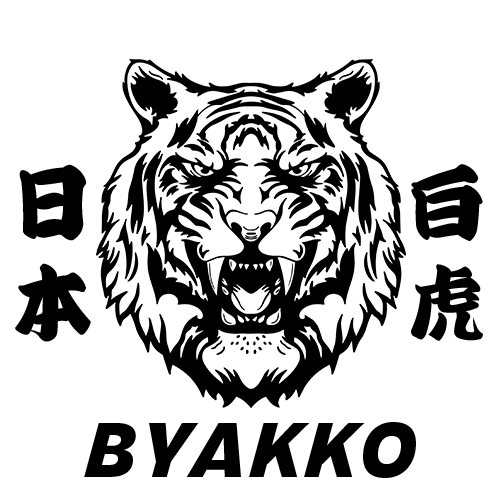1. What is Samurai Culture? Its Origins and Historical Background
The word samurai holds a particularly special place in Japanese history and culture. For approximately a thousand years, from the Heian period to the end of the Edo period, samurai played a crucial role as members of the ruling class. As warriors tasked with defending the nation, their attire and equipment carried distinctive meanings.
Origins of the Samurai:
The samurai emerged during the Heian period amidst a social climate where warriors and aristocrats began to intermingle. Initially, they existed as regional landowning clans, but over time, they developed into a dominant ruling class.
Roles of the Samurai:
Beyond their prowess in combat, samurai were expected to embody loyalty and observe strict etiquette, serving as spiritual figures as well as military ones. This sense of spirituality was reflected in their clothing and ornaments, including the kimono.
A defining feature of samurai culture is that their attire symbolised not just functionality but also their social status and inner values as warriors.
2. Samurai Attire: From Armour to Kimono
Samurai clothing varied by era, ranging from battle armour to everyday garments such as jikatare and haori-hakama. These outfits played a vital role in expressing the samurai’s dignity and spiritual discipline.
Armour (Kacchū)
Armour served as crucial protection on the battlefield. Designs and materials evolved over the centuries, each style serving both practical and symbolic functions.
Key Features of Samurai Armour:
-
Materials: Constructed using a blend of metal, leather, and fabric, balancing protection with mobility.
-
Design: Often adorned with family crests and emblems to signify the wearer’s status and pride as a warrior.
Jikatare
Worn beneath the armour, jikatare was also an important part of the samurai’s daily attire.
Characteristics of Jikatare:
While designed to be functional and durable like the armour it accompanied, aesthetic appeal was equally important, with attention paid to colour and decoration.
Haori-Hakama
This formal combination of jacket (haori) and pleated trousers (hakama) was worn during peacetime, ceremonies, and daily life.
Characteristics of Haori-Hakama:
-
Haori: A formal overcoat worn atop a kimono, symbolising status and decorum.
-
Hakama: A skirt-like or trouser-like garment worn over the lower body, designed for ease of movement.
Haori-hakama ensembles often reflected a samurai’s social position, and their design and fabric were typically linked to the wearer’s family crest.
3. The Spirituality and Aesthetic Embodied in Samurai Kimono
Samurai attire was not merely utilitarian but deeply infused with values and aesthetics. The way samurai dressed reflected the spirit of bushidō—the warrior’s code—which they observed both in battle and daily life.
Aesthetic Sensibility in Samurai Attire
While proud warriors, samurai also valued refinement and etiquette in everyday life. Their kimono choices and mannerisms reflected their inner discipline and awareness of beauty.
-
Colour Symbolism: Kimono colours held specific meanings, often dictated by family lineage and social standing.
-
Family Crests: Embroidered onto garments, crests symbolised the identity and honour of a samurai family.
Materials and Quality of Kimono
Great care was taken in the selection of kimono fabrics, as quality materials signified the wearer’s refinement and status.
-
Material Preferences: Silk and linen were favoured for their elegance and texture. Silk, in particular, was prized for its lustre and association with dignity.
4. Historical Evolution of Samurai Attire
Samurai garments evolved significantly from the Heian to the Edo period.
From the Heian to the Sengoku Period
In the Heian period, samurai attire retained aristocratic elements. However, during the Sengoku period—an era of near-constant warfare—functionality became paramount.
-
Armour in the Sengoku Period: Designed for mobility and resilience, often engraved with family crests to express pride and individuality.
The Peaceful Edo Period
With the arrival of peace in the Edo period, the function of samurai attire shifted towards ceremonial and social expression.
-
Haori-Hakama in the Edo Period: As armour became largely obsolete, the haori-hakama gained prominence. Aesthetic value became increasingly important in samurai dress.
5. The Legacy of Samurai Culture in the Modern Era
The samurai's values and style continue to influence modern society. In films, theatre, and fashion, the samurai image remains a symbol of elegance and discipline.
-
Samurai Attire in Film and Theatre: Films like Seven Samurai and The Last Samurai showcase the enduring visual and philosophical appeal of samurai dress.
-
Modern Fashion Influences: The essence of samurai style and bushidō values can be seen in contemporary fashion and lifestyle trends.
Conclusion: The Profound Bond Between Samurai and Kimono
The relationship between the samurai and their kimono goes far beyond clothing—it represents a rich tapestry of history, identity, and spirituality. More than just battlefield gear, samurai attire was a vehicle for expressing inner values and social roles. Even today, we see the legacy of the samurai in art, cinema, and fashion, carrying their spirit into the modern age.
